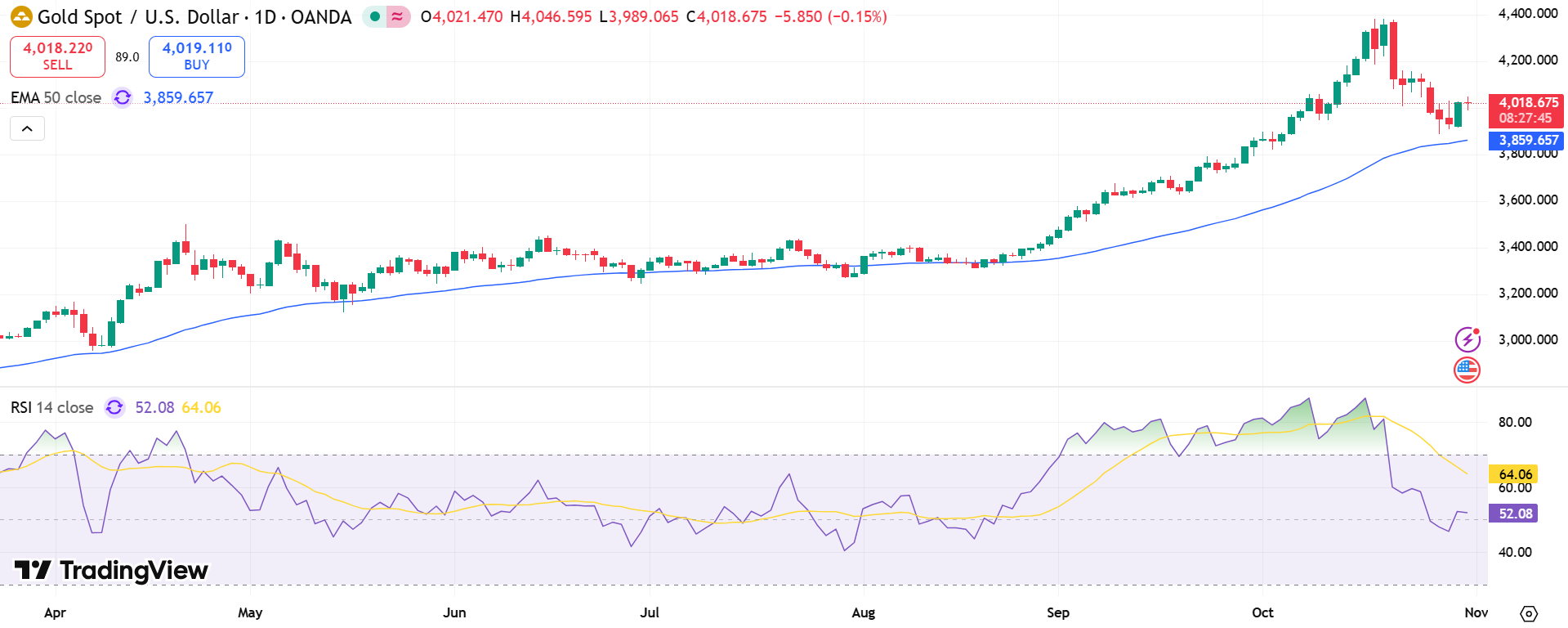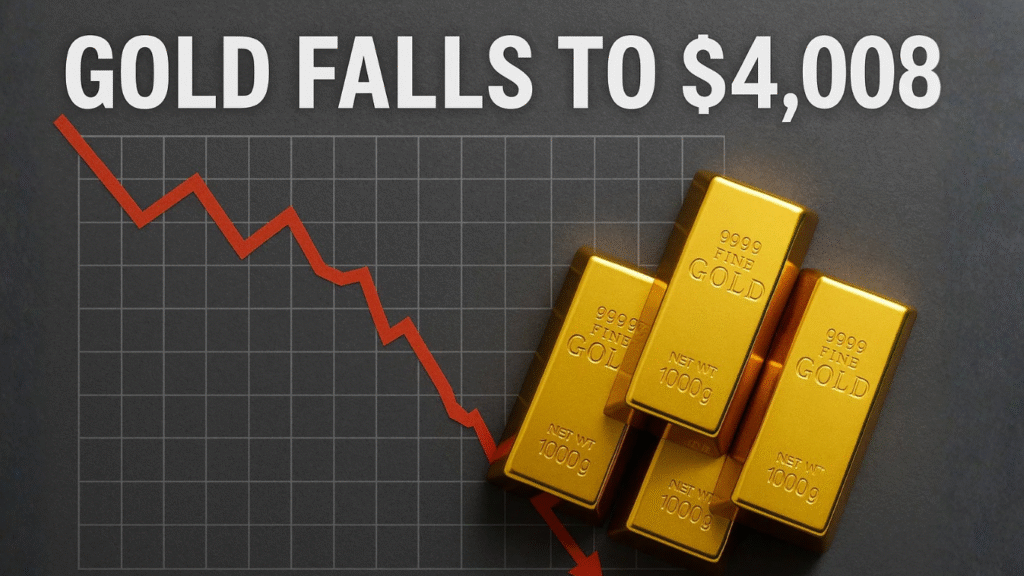Gold prices slipped on Friday, setting course for a second straight weekly decline, as investors weighed the Federal Reserve’s cautious stance on interest rate cuts against signs of improving U.S.-China trade relations.
Spot gold fell 0.4% to $4,008.65 an ounce by 01:49 ET (05:49 GMT), while U.S. gold futures edged 0.1% higher to $4,019.90. Despite a sharp 2% rebound on Thursday, bullion remained down about 2.6% for the week—its weakest stretch in nearly a month.
The Fed on Wednesday reduced its benchmark rate by 25 basis points, bringing it to a 3.75%-4.00% range, but Chair Jerome Powell struck a restrained tone. He emphasized that future rate moves would depend on upcoming data, calling a December cut “far from a foregone conclusion.”
The remarks lifted U.S. Treasury yields and strengthened the dollar, both of which traditionally pressure gold, as the metal offers no yield.
“Gold’s rally lost steam as Powell made it clear the Fed isn’t ready to commit to an extended easing cycle,” said one market analyst. “Short-term traders are now looking for new catalysts.”
Trade Optimism Erodes Safe-Haven Appeal
Improved trade sentiment further weighed on gold demand. U.S. President Donald Trump and Chinese President Xi Jinping met in South Korea on Thursday and described trade talks as making “amazing” progress. The two sides agreed to cut tariffs on fentanyl-linked imports, while China resumed U.S. soybean purchases and paused rare-earth export curbs.
This thaw in trade tensions encouraged investors to rotate out of defensive assets like gold and into equities and risk-sensitive commodities.
However, analysts said longer-term support for the metal could persist due to central bank purchases and ongoing geopolitical and economic uncertainties.
Key factors shaping gold’s outlook:
- Fed’s data-dependent stance limits near-term gains
- U.S.-China trade optimism reduces safe-haven demand
- Central bank buying provides structural support
Industrial Metals Trade Mixed on China Woes
The broader metals complex remained subdued, with industrial demand signals turning cautious. Silver futures slipped 0.3% to $48.48 per ounce, while platinum inched up 0.4% to $1,617.45.

Copper prices also softened, with London Metal Exchange contracts down 0.4% to $10,866.20 per ton and U.S. copper futures falling 0.6% to $5.07 per pound.
Fresh data showed China’s manufacturing PMI contracting for a seventh consecutive month, heightening concerns over the country’s uneven post-pandemic recovery. The weak reading has fueled speculation that Beijing may unveil additional economic support measures to stabilize growth and commodity demand.
As investors digest the Fed’s cautious message and signs of easing trade tensions, gold’s near-term trajectory will likely hinge on upcoming inflation data and further policy cues from central banks.


